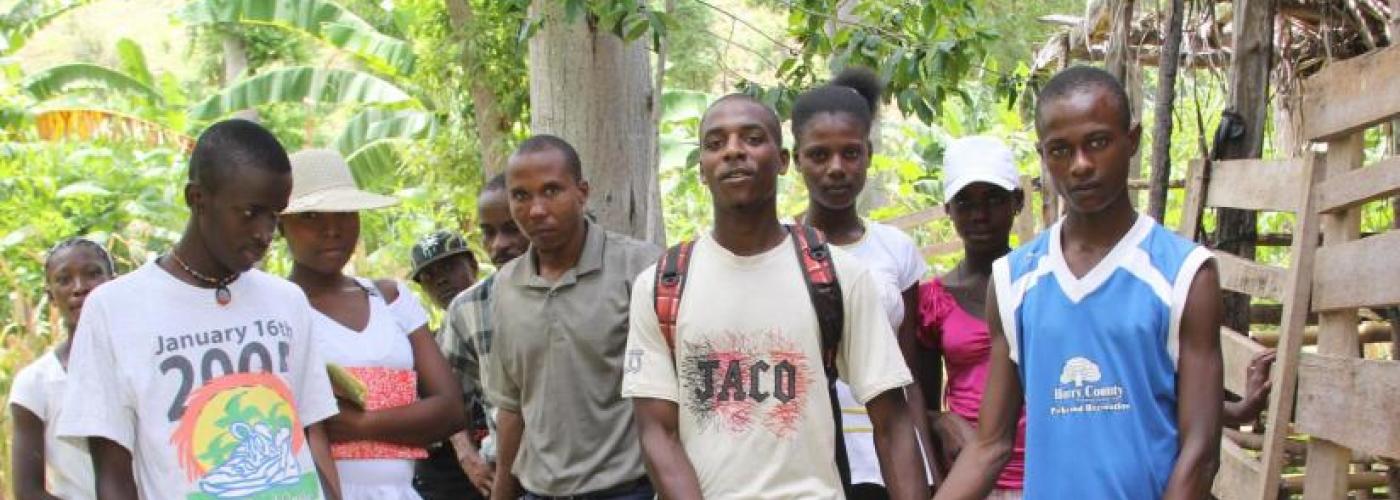Can Market Systems Facilitation Meld with Youth Engagement?
Image

In our pursuit of inclusive agriculture-led growth, we increasingly understand how important it is that we put more emphasis on youth. However, there is a fundamental challenge with the market systems approach when it comes to reaching a specific population of interest. Market facilitation works best when market actors opt into creating changes in the market. But, if our population of interest is excluded from the market, how do they opt in?
An easier answer might be to go to the parts of the market where you find that population. We often see this in plans to work in “women’s” crops or post-harvest functions dominated by women. But in theory, shouldn’t youth be engaged in all parts of the agri-food system to ensure its future vitality?
To add one more challenge, there is a tension that much of the available evidence on effective youth employment programming involves high-touch methods, for example, wrap-around services and multi-pronged interventions, that are more customized to individuals and include layering of formal services with community interventions and interpersonal support networks. This is generally at odds with light-touch facilitation practices often used in market systems programs that engage as little as possible with market actors to nudge behavior change.
So what should we do in a market systems approach to reach youth? And it’s not just about youth inclusion (while critical) but also taking it a step further to youth engagement. From a market systems lens, we need two perspectives on engaging youth.
Market actors engaging youth
If we want to engage larger numbers of young people, or if we want to engage them in the markets where they are largely excluded, we need to seek strategic ways to do so through our market actor partners. By starting with that market actor’s own goals, we can seek ways to support those goals, meaningfully engage youth and support our wider development objectives.
For example, market actors might be interested in a growth strategy for reaching new market segments where employing youth could best support them in that endeavor. This happened with an agricultural inputs firm in Bangladesh, where 50 percent of the total population is 24 years old or younger. The agricultural inputs firm hired youth interns to run what was originally planned as a hotline for problem resolution: the interns were intended to respond to customer complaints and questions about product use. The youth were successful in their customer interactions, demonstrating great capacity to coach customers in their product use. They were so successful that the firm hired them full-time to do proactive customer outreach instead of just responding to problems. This made these young people the face of the firm’s client relationships.
Or perhaps, market actors might be interested in creative approaches that would benefit from a youth-run support service firm. Or market actors might benefit from improved linkages to academia and the research community for which youth could be a conduit. There are so many possibilities to consider.
Youth as market actor
Perhaps from an increased engagement perspective, we can more purposefully seek out youth-run businesses and organizations to serve as positive change agents in markets. Some markets may have few youth-run businesses, but they are out there. This may require us to work with larger numbers of (and perhaps smaller) market actors to create space for the youth-run businesses. But, given that market facilitation is often about shifting current practices and changing incentives, youth may be less entrenched in the market status quo and more open to the change.
In Uganda, a country where 78 percent of the population is under 30, many youth are thriving in agriculture. Exhibitions on agriculture careers run by and for youth are bringing more energy to the sector. Sometimes these businesses create new market services altogether. Akorian, a youth-run company now employing 480 young people, created a digital platform that has connected 60,000 farmers to production and marketing services. That is a powerful market actor to amplify.
Moving forward
These Six Tips for Increasing Meaningful Youth Engagement from YouthPower elaborate on some methods to meaningfully engage youth from a more typical youth programming perspective, but these largely could be reinterpreted to apply to a market systems approach as well.
Moreover, we need to think about applying some basic engagement principles in our daily activity operations. Are we consulting with youth among our stakeholders? When we seek out market actor partners are we communicating in youth-friendly channels? Do we have youth on our teams, and if so, how are we utilizing them? Who are we talking to during site visits? Are youth included? Are we reaching a diverse[1] set of youth?
Given that youth engagement is a newer angle on the market systems approach, donors need to be informed by continued learning on the ground. From there, we can establish as a community just what is good practice.
As you uncover lessons on this front, please share them back with us. Only then will we truly understand how to meld market systems facilitation with meaningful youth engagement.
[1] Including but not limited to youth from diverse: age cohort, sexual orientation and/or gender identity, ethnicity, religion, socioeconomic status, skill set, education, rural vs. urban locations, etc.


